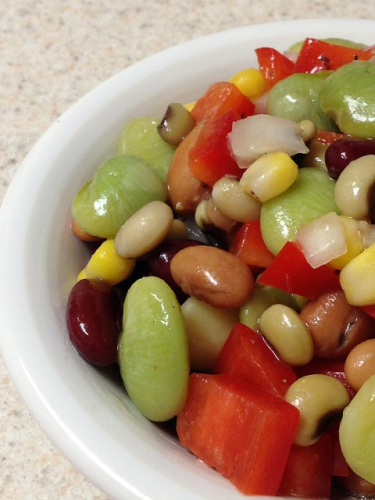Healthy Nurse, Healthy Nation™ Blog - 7 Tips for Making and Enjoying Plant-Forward Food That Feeds Your Soul
Published
Plant-based eating provides incredible health benefits. But the challenge for many — especially during the holidays — is enjoying the beloved cultural dishes of your heritage while sticking to a plant-forward diet.
Blog 2 in our Plant-Based Food Series!

The ethnic dishes and family recipes you grew up with tend to feed your soul. And if you can make the food that feeds your soul healthier for your body, it’s a win-win. To guide you in how to do just that, we turned to two plant-based eating experts:
- Deitra Dennis, RN, NBC-HWC, is a licensed instructor for the Physician’s Committee for Responsible Medicine and ambassador of African Heritage and Health.
- Jane Esselstyn, RN, is an author, educator, and presenter specializing in whole-food, plant-based eating.
Jane and Deitra offer 7 tips to help you embrace plant-forward eating while enjoying your favorite ethnic dishes:
1. View Plant-Based Eating as a Return to Your Roots
The diets of most long-lived cultures were traditionally plant-heavy, and several still are. When you eat plant-based, you often eat the diet of earlier generations.
“If you go deep into any culture, you’re going to find a foundation of legumes, vegetables, and things from the harvest,” Jane says. “That was the basis of survival and what sustained them.”
2. Start Simple
It may feel overwhelming to overhaul your entire diet when you’re just beginning to eat plant-forward. Deitra recommends starting with just one meal a day. For the first week, eat a plant-based breakfast. The following week, add plant-based lunches. Within a month, your entire diet will be plant-based.
Work on one dish at a time when adapting recipes from your heritage to plant-based eating. Deitra started by perfecting her favorite family recipe for collard greens. Once her plant-based version of collard greens tasted right, she moved on to cornbread.
3. Tweak the Taste
Dissect the flavor of the dish you hope to recreate and then build it back with plant-based ingredients. Play with spices and natural ingredients until you get a flavor that hits home.
“When making a recipe vegan and building flavor, think about which ingredients add fat, acid, salt, sweetness, and savory flavor to that dish,” Deitra says. “Without meat in the dish, you may need to find ways to add several elements.” For example, in place of traditional collard greens, Deitra makes "Mixed Greens" and uses maple syrup and smoked paprika or liquid smoke to get the smokey-sweet flavor that pork typically provides.
4. Preserve the Sensory Experience
Traditional dishes of your heritage can evoke memories and transport you back to your childhood. “It’s like an internal hug with every bite,” Deitra says. “Certain dishes take me right back to my mom’s house, sitting around the table eating, laughing, and talking for hours.” But taste isn’t the only aspect of a meal that makes it familiar.
Mimicking a meal’s entire sensory experience can preserve that dish’s integrity. As you tweak a cultural dish to be plant-based, Deitra recommends focusing on how you and your family experience that meal based on your senses:
Smell
When you recognize the smell of a dish, you’ll be more likely to find the taste is familiar. “The good news is that a lot of the aroma of cultural dishes comes from cooking vegetables, herbs, and spices,” she says. “If you do nothing but put onions and garlic in a skillet, people will be drawn to it and ask what you’re making.”
Sound
The familiar sounds of cooking a favorite dish can also impact the experience. “In Southern cooking, when you make cornbread, you pour the batter in a preheated cast iron skillet,” Deitra says. “It starts sizzling and creates a crust.” Whenever possible, use those same cooking methods to enrich the sensory experience.
Touch (Texture)
Vegan dishes can sometimes be mushy, so take steps to add texture. “Make sure you’re adding a crunch layer or recreating texture, so it has a great mouth feel when eating it,” she says. “It took me some time to nail the texture of my black bean burgers. But now everyone loves them.”
Sight
Most people eat with their eyes, says Deitra. If a meal doesn’t look appealing, people won’t want to try it. Think about how the dish typically looks. If you can’t recreate that look, add a rainbow of colors to make the plate fresh and appetizing.
5. Embrace Evolving Traditions
It’s understandable to feel hesitant or guilty when changing a cherished cultural dish. But traditions, recipes, and cooking methods naturally evolve as the world changes, says Jane.
“Traditions are amazing, but they can also be dynamic,” she says. “Keep most of the old ways, but make those traditions work for you. Bringing in new things is not displacing love. Your traditions can grow and change while still honoring the past — and it allows you to put your stamp on it.”
6. Make It a Family Affair
Whether cooking a weeknight dinner or a holiday meal, getting your family involved can pay off. Have your children help with the cooking process. They’ll understand what’s in the food and be so proud of what they made, they’re sure to eat it.
To adapt a favorite family recipe to be plant-based, ask older family members to help you taste test. They’ll be honest about missing elements and may suggest healthy substitutions.
7. Utilize Available Resources, Recipes, and Support
There are many resources available to help you put more plants on your plate, even if your diet reflects your heritage, such as:
- Afro-Vegan Society provides cooking videos, recipes, a vegan holiday guide, and a list of Black-owned vegan restaurants across the United States.
- Oldways offers recipes, resources, and education to help people embrace healthier, traditional versions of Mediterranean, African, Latin American, and Asian heritage diets.
- Physicians Committee for Responsible Medicine has nutrition classes, a 21-day vegan kick-start challenge, and information about traditional African, Indian, Chinese, and Native American diets.
Ready to Get Started?
To kick-start your plant-forward lifestyle, consider trying a cooking class, joining a plant-based eating challenge, or making one of these recipes:
- Amaranth with peppers and cabbage
- Asparagus and ginger fried rice
- Black-eyed peas and okra stew (“Red Red”)
- Creamy miso polenta bowl with oven-roasted maple sriracha cauliflower
- Southern cornbread
- Sweet potato breakfast burrito
- Taco salad
- Vegan saucy Thai noodles
Don’t be afraid to experiment and have fun — it may take time to find recipes you love and get your family favorites just right. But in the end, you’ll be feeding your soul with plants, and your body will thank you.
Have you tweaked a beloved cultural recipe to be plant-based? If so, we’d love to hear about how you did it. Share with us in our comments below.

Not a member of Healthy Nurse, Healthy Nation (HNHN) yet? Join today!
Sign up for our monthly challenges!
Blog Nutrition
12/18/2023 1:58pm CST



Post a Comment or Question
Having kids at home we turn off the TV and cell phones and eat together